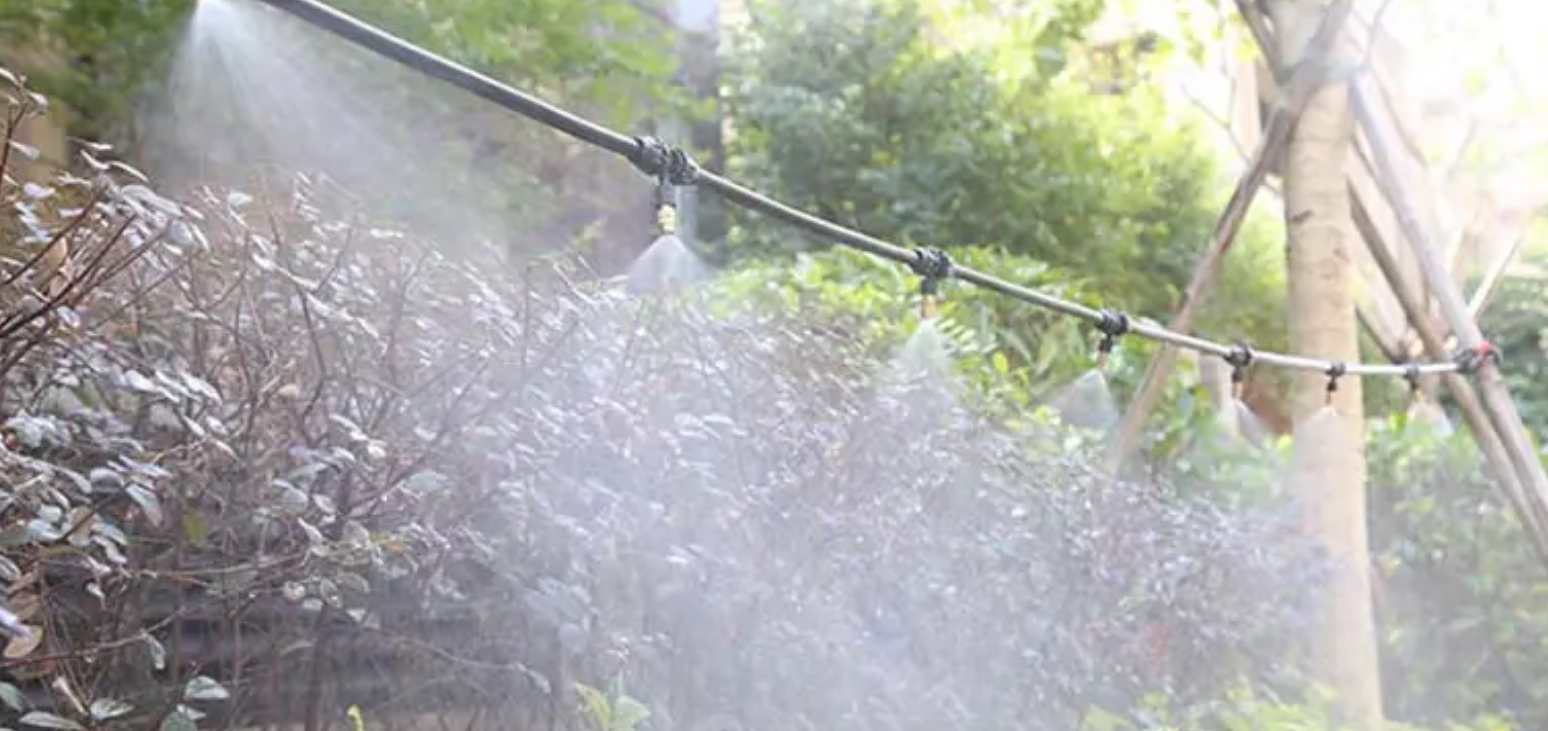Water is a fundamental resource for all living organisms, playing a crucial role in maintaining ecosystems and supporting biodiversity. In recent years, misters have gained popularity as a practical solution for providing water to birds, insects, and other wildlife. By creating a fine mist, these devices offer hydration, regulate temperature, and contribute to a thriving natural habitat.
Misters are particularly beneficial in dry and urban areas where natural water sources may be limited. They not only help birds stay cool during hot weather but also attract pollinators such as butterflies and bees. Additionally, they create microhabitats that support a wide range of species, encouraging a balanced and sustainable environment.
Importance of Water Sources for Biodiversity
Water availability is a key factor in maintaining biodiversity, as many species rely on consistent hydration for survival. Natural sources such as rivers, ponds, and dew-covered plants provide moisture, but in urban and drought-prone areas, these may not be sufficient. Misters offer an effective way to supplement water sources, ensuring that birds, insects, and small mammals have access to the moisture they need.
Misters help create humid microenvironments that support plant growth and attract a variety of wildlife. They play a role in temperature regulation, reducing heat stress for birds and pollinators. Furthermore, by maintaining hydration levels, they contribute to the health of local ecosystems, promoting species diversity and ecological balance.
How Misters Provide Essential Hydration
Misters work by dispersing fine droplets of water into the air, mimicking natural dew and light rainfall. This method of hydration is particularly beneficial for birds, as it allows them to drink and cool down without the risks associated with large open water sources, such as predation or contamination.
The misting process also benefits insects, including bees and butterflies, by providing a safe way to access moisture without the danger of drowning. In addition, misters support plant hydration, helping to sustain the vegetation that many animals depend on for food and shelter. By incorporating misters into green spaces, gardens, and wildlife-friendly areas, individuals can help sustain biodiversity and create a healthier environment for native species.
Enhancing Bird-Friendly Habitats with Misters
Creating a bird-friendly habitat requires a combination of food, shelter, and water. While many people focus on providing feeders and nesting spaces, water sources are just as important. Misters offer a reliable way to ensure that birds have access to clean water for drinking and bathing, helping them maintain their health and feather condition.
Misters also attract a wider variety of bird species, including those that might not visit traditional birdbaths or feeders. Some birds, such as hummingbirds and warblers, prefer mist and fine water droplets over standing water. By incorporating misters into a garden or outdoor space, it is possible to encourage biodiversity and support local bird populations.
Creating a Safe and Sustainable Environment for Birds
When installing misters in a bird-friendly habitat, it is important to consider placement and timing. Positioning misters near trees, shrubs, or dense vegetation provides birds with a sense of security while they hydrate. Ensuring that misters operate during the hottest parts of the day can also help birds regulate their body temperature and avoid heat stress.
Using misters in combination with native plants can further enhance their effectiveness. Native vegetation retains moisture and provides food sources such as nectar, seeds, and insects, creating a well-balanced habitat. Additionally, choosing energy-efficient and water-conserving misting systems minimises waste while maximising benefits for wildlife.
The Impact of Misters on Local Ecosystems
Misters play a significant role in supporting local ecosystems by maintaining hydration levels for a variety of species. They contribute to a balanced environment by providing moisture that benefits not only birds but also insects, small mammals, and plant life. In areas where natural water sources are scarce, misters can help sustain populations of pollinators, amphibians, and other wildlife that rely on humidity for survival.
By increasing moisture in the air and soil, misters encourage plant growth, which in turn supports herbivorous species and the predators that depend on them. They also help maintain soil health by preventing excessive dryness, reducing dust, and promoting the development of beneficial microorganisms. In urban environments, where concrete and artificial surfaces retain heat, misters contribute to cooling effects, creating more hospitable conditions for local flora and fauna.
Supporting Pollinators and Other Wildlife
Pollinators such as bees, butterflies, and hummingbirds benefit greatly from misters, as they rely on water for hydration and temperature regulation. Unlike large water sources, which can pose drowning risks, the fine droplets produced by misters allow insects to collect moisture safely. This is particularly valuable in hot and dry climates, where pollinators face increased stress due to dehydration.
Misters also support amphibians, such as frogs and toads, by providing the damp environments they need to thrive. These species play a crucial role in controlling insect populations, contributing to a balanced ecosystem. By installing misters in gardens, parks, and other green spaces, individuals can create habitats that encourage biodiversity and promote ecological stability.
Best Practices for Installing Misters in Gardens
To maximise the benefits of misters for biodiversity and bird-friendly habitats, careful planning is essential. Proper installation ensures that misters provide adequate hydration while minimising water waste. When positioned correctly, they can create a microclimate that supports various species, from birds and pollinators to beneficial insects and small mammals.
Key factors to consider include water pressure, nozzle type, and placement. Misters should be installed in shaded or partially shaded areas to prevent excessive evaporation and ensure longer-lasting moisture. They should also be positioned near vegetation, as plants can help retain humidity and provide shelter for wildlife. Additionally, using a timer or automated system can help regulate misting periods, ensuring a consistent and efficient water supply.
Choosing the Right Misting System for Your Landscape
Selecting the right misting system depends on the size of the area, the species it aims to support, and water conservation goals. Several types of misting systems are available, ranging from simple manual sprayers to advanced automated systems with adjustable settings.
- Low-pressure misters are ideal for small gardens and bird-friendly spaces, offering gentle misting with minimal water use.
- High-pressure systems create an ultra-fine mist that cools the environment effectively, making them suitable for larger areas or particularly hot climates.
- Solar-powered misters provide an eco-friendly alternative by using renewable energy, reducing the environmental impact of water distribution.
Regardless of the system chosen, regular maintenance is crucial to prevent clogging, ensure water quality, and maintain efficiency. By selecting and installing misters thoughtfully, individuals can create a sustainable habitat that supports local wildlife while conserving resources.
Environmental Benefits of Using Misters
Misters offer numerous environmental benefits, particularly in regions where water conservation and biodiversity protection are priorities. By providing hydration in a controlled manner, they help maintain ecosystems without excessive water consumption. Their ability to create humid microclimates benefits plants, wildlife, and even soil health, contributing to a more sustainable environment.
One of the main advantages of misters is their role in cooling urban and suburban spaces. In areas with limited natural shade, they help reduce the effects of the heat island phenomenon, where artificial surfaces absorb and retain heat. By lowering temperatures, misters create more comfortable conditions for both humans and wildlife, reducing the need for energy-intensive cooling solutions.
Reducing Water Waste and Promoting Sustainability
Compared to traditional watering methods, misters are an efficient way to distribute moisture. Their fine droplets minimise runoff and evaporation, ensuring that water is absorbed effectively by plants and wildlife. This controlled distribution helps reduce overall water consumption, making misters a sustainable choice for gardens, parks, and nature reserves.
Misters can also be integrated with rainwater harvesting systems, further enhancing their sustainability. By using collected rainwater, individuals can provide hydration for wildlife without drawing from municipal water supplies. Additionally, modern misting systems often include timers and sensors that adjust misting based on humidity levels, preventing unnecessary water use.
By incorporating misters into conservation efforts, individuals and communities can support biodiversity while maintaining responsible water use. Their ability to create balanced ecosystems makes them a valuable tool for sustainable landscaping and wildlife-friendly habitat design.
Conclusion
Misters play a crucial role in supporting biodiversity and creating bird-friendly habitats by providing a reliable source of hydration for wildlife. In regions where natural water sources are scarce, they help maintain healthy ecosystems by benefiting birds, pollinators, and other small creatures. Their ability to create humid microenvironments supports plant growth, improves soil health, and contributes to a balanced and sustainable habitat.
When installed thoughtfully, misters enhance gardens and outdoor spaces while minimising water waste. By selecting the right misting system, positioning it strategically, and integrating sustainable practices such as rainwater harvesting, individuals can maximise their benefits while promoting environmental conservation.
As climate conditions continue to change, providing accessible water sources for wildlife will become increasingly important. By incorporating misters into biodiversity-friendly landscapes, individuals and communities can contribute to the preservation of local ecosystems and the well-being of countless species.
FAQs
How do misters help support bird-friendly habitats?
Misters provide a gentle source of water that birds can use for drinking and cooling down. Unlike large water sources, misters create fine droplets that birds can safely access, helping them stay hydrated and regulate their body temperature.
Can misters attract pollinators such as bees and butterflies?
Yes, misters are beneficial for pollinators. The fine mist provides a safe and accessible source of hydration for bees, butterflies, and other insects, reducing the risk of drowning that can occur in traditional water sources.
Do misters waste water compared to other watering methods?
No, misters are an efficient way to distribute water. They produce fine droplets that are easily absorbed by plants and wildlife, minimising runoff and evaporation. Many modern systems also have timers and sensors to optimise water use.
Where is the best place to install misters in a garden?
Misters should be placed near vegetation, shaded areas, or bird-friendly spaces to maximise their benefits. Positioning them close to trees and shrubs provides a secure environment for birds and helps retain moisture for longer periods.
Are misters suitable for all climates?
Misters are particularly useful in hot and dry climates, where natural water sources may be limited. However, they can also be beneficial in temperate regions by providing additional hydration for wildlife during warm periods.

